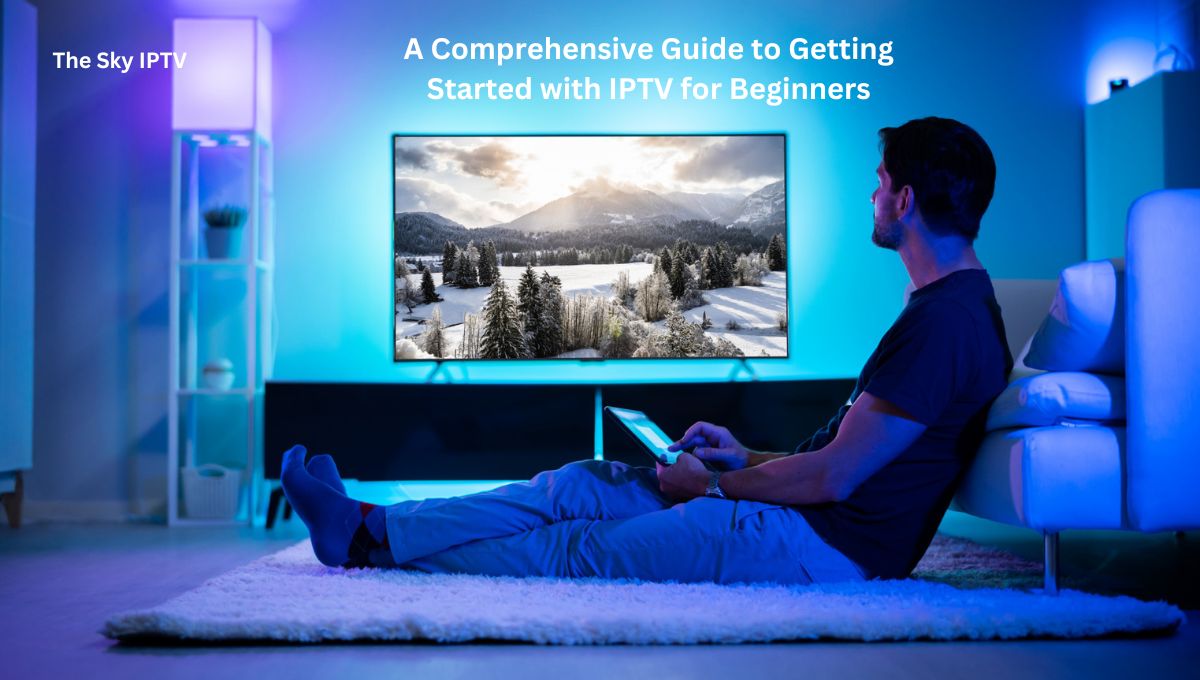
Powered by GB IPTV UK
If you’re unfamiliar with IPTV for beginners, you may be captivated by the opportunities it presents for online access to television programming. IPTV offers a flexible and easy option to watch your favourite episodes and films, as well as live TV streaming. For novices, however, using this technology might be intimidating. The goal of this article is to provide you with a thorough understanding of IPTV UK so you can confidently explore the fundamentals and get started.
Introduction of IPTV
The distribution of television material via internet protocol (IP) networks is known as IPTV, or Internet Protocol Television. In contrast to conventional cable or satellite TV, which depend on specialised infrastructure, IPTV streams video straight to your device via your current internet connection.
What is IPTV?
Through internet protocol networks, IPTV provides television programming, enabling users to stream media on a variety of devices, including PCs, cellphones, smart TVs, and specialised IPTV boxes.
How is IPTV operated?
Traditional television signals are transformed into digital data packets that are sent over the internet in order for best UK IPTV to function. The viewer’s device then reassembles these packets to allow TV shows, films, and other material to replay smoothly.
IPTV Service Types
Generally, IPTV service providers may be divided into three groups:
streaming live TV
With the help of live TV streaming services, consumers may watch a variety of channels and their favourite shows in real time.
On-demand video (VOD)
Customers may access a collection of films, TV series, and other material from VOD providers whenever it’s convenient for them.
Time-shifted content
Time-shifted media services provide flexibility in scheduling by enabling consumers to watch previously broadcast programmes on demand.
IPTV Equipment Requirements
You’ll need the following hardware to begin using IPTV for beginners:
Internet connection: For seamless streaming, you need a dependable internet connection with enough capacity.
IPTV box or device: To access IPTV services, you may use a computer, smartphone, smart TV, or specialised IPTV box, depending on your preferences.
Selecting the Appropriate IPTV Service Supplier
When choosing an IPTV service provider, take into account the following aspects:
- material offerings: Seek out suppliers that have a wide range of channels and materials available.
- Plans for prices: To determine which membership offers the most value for your money, compare costs and benefits.
- Client testimonials and standing: Examine reviews and evaluations from previous clients to determine the dependability and calibre of the service.
Configuring IPTV
IPTV is comparatively easy to set up.
- Setting up your equipment: Make sure you have the right cords by connecting your IPTV device to both your TV and internet router.
- Turning on the service: To activate your membership, adhere to your IPTV provider’s instructions.
- Setting up preferences: Adapt your channel selection, preferences, and settings to suit your tastes.
Using the IPTV Interface
After configuring your IPTV service, get acquainted with its user interface, IPTV for Beginners.
- Channel guide: Use the on-screen guide to sift through the various channels.
- Use the search option to locate certain channels or programmes easily.
- Playlists and favourites: Make individualised lists of your preferred television programmes and channels for quick access.
Performance and Quality of Streaming
Take into account the following elements to guarantee the best possible streaming quality and performance:
- Requirements for bandwidth: Verify that your internet connection has enough bandwidth to support seamless streaming.
- Support for HD and 4K: For the optimal viewing experience, choose IPTV packages that include content in high definition and 4K.
- Buffering and lag problems: Optimise your network configuration and hardware to resolve buffering and lag problems.
Legal Aspects to Take into Account
It’s important to be informed of any legal difficulties before getting started with IPTV for Beginners.
- Copyright infringement: To avoid facing legal ramifications, stay away from unapproved or pirated information.
- Geo-restrictions: Take note of any geographic limitations that can prevent you from accessing certain material depending on where you are.
Some Advice for Enhancing Your IPTV Experience
Take into consideration these pointers to improve your IPTV for beginners:
- Make sure your internet connection is steady. Use a dependable internet connection to reduce disruptions and delays.
- Regularly update the firmware on your device. Update the firmware and software on your IPTV device to guarantee security and compatibility.
- Protect your network: Make sure your network is secure by encrypting it and using strong passwords.
Typical Troubleshooting
If your IPTV service isn’t working properly, try these troubleshooting steps:
If you’re experiencing poor reception or no signal, make sure everything is set correctly by checking the settings on your device and internet connection.
Reduce network congestion by restricting the number of devices connected to your network in order to avoid frozen screens or buffering.
Sync problems with audio or video: To synchronise playback, adjust the audio and video settings on your device.
Upcoming Developments in IPTV
IPTV Buy is positioned to see major breakthroughs as technology continues to advance.
Technological developments: Anticipate enhancements in terms of device compatibility, interface design, and streaming quality.
Connectivity with intelligent household appliances: Seek out IPTV services that provide improved control and convenience via seamless integration with smart home appliances.
Conclusion
Although setting up IPTV may appear difficult at first, with the correct information and planning, you may have a flawless watching experience. By being aware of the fundamentals

Leave a Reply